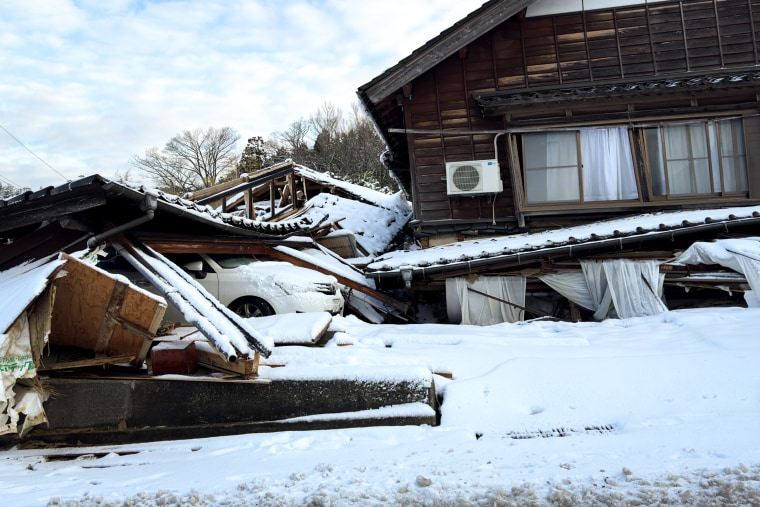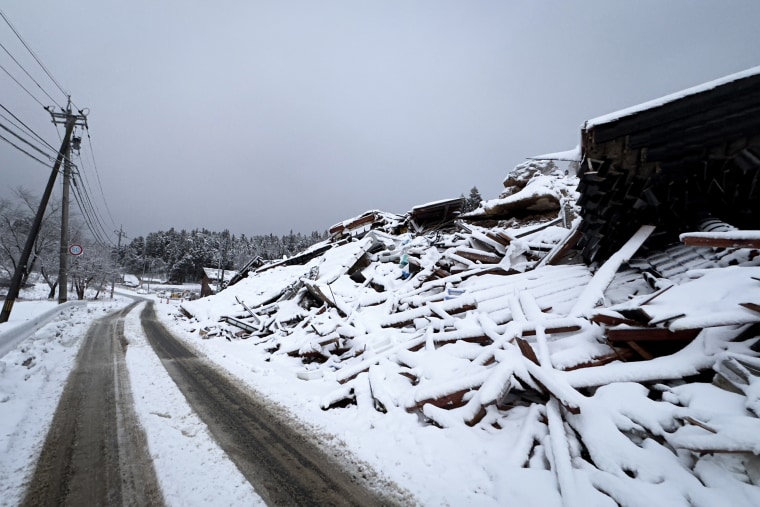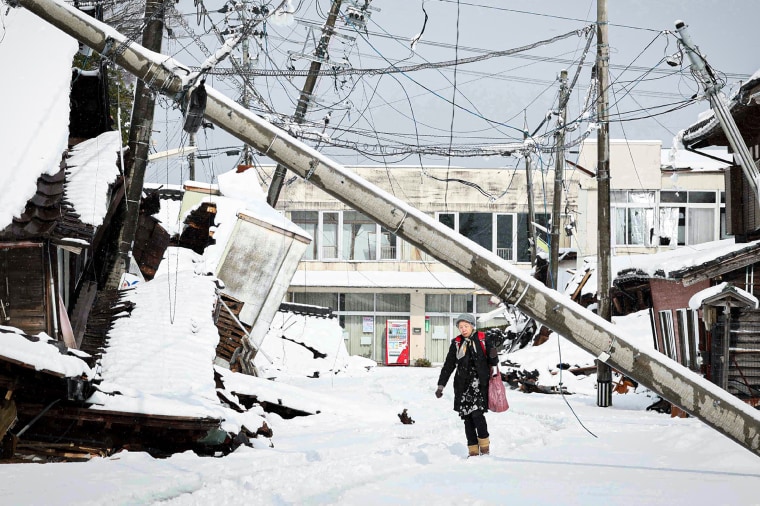A new theory suggests that heavy snowfall could be a factor in triggering swarms of earthquakes — evidence that what’s happening on and above the Earth’s surface may play a role in events underground.
That’s according to a study published Wednesday in the journal Science Advances, which points to a potential link between heavy snowfall on Japan’s Noto Peninsula and thousands of quakes measured there since late 2020.
It’s one of the first studies to link changes in weather or climate to earthquake activity.
"Those big snowfall events seem to correlate well with the start of these big earthquake swarms," said William Frank, an author of the study and an assistant professor of Earth, atmospheric and planetary sciences at the Massachusetts Institute of Technology. "We shouldn’t forget the climate itself can also play a role in changing the stress state at depth where earthquakes are happening."
The study does not say that changes in climate or weather are directly causing earthquakes. Instead, it suggests that the rate of earthquakes in a given area could increase or decrease because of changes in how water is moving beneath the surface and how much pressure the weight of the snow exerts.
David Shelly, a research geophysicist with the United States Geological Society, said the study raises interesting questions, but more research is needed to validate its findings.
“What they’re showing is that seismicity seems to initiate and ramp up following these times of snowfall. It’s an intriguing observation, I’m not sure it’s conclusive,” he said.
Still, Shelly expects other seismologists to be keenly interested in the research.
“The sequence is a subject of a lot of interest in the community. This is the first paper that suggests there might be an environmental factor,” Shelly said.

The study evaluated thousands of earthquakes on Japan’s Noto Peninsula, which is located about 190 miles northwest of Tokyo on the Sea of Japan. In 2021, after a heavy snow, the rate of earthquakes in the area rose substantially — with hundreds recorded each day.
“They were seeing a factor-10 increase in the number of earthquakes in this region compared to what was happening previously,” Frank said.
The biggest in the swarm was a magnitude-7.5 earthquake on New Year’s Day of this year. More than 240 deaths were linked to this mainshock event, according to the Japanese Red Cross Society.
The timing of the swarm was also unusual compared to a typical sequence of aftershocks, according to Frank.
“They have this statistical signature of earthquakes being driven by something else,” he said.

He and the other study authors compared the pattern of earthquakes in the Noto Peninsula with a model of pressure within pores under the Earth’s surface. The model accounts for above-ground factors that change the pressure within the rock underneath — such as seasonal sea-level changes, fluctuations in atmospheric pressure and heavy rain or snow events.
The results indicated that the weight of the snowpack on the Noto Peninsula increased the pressure in those pores. Pressure changes from adding and removing weight as snow accumulates and then melts can destabilize pre-existing faults, the researchers think.
“If you have enough snow, you’ll actually be pushing the earth down and if you take the snow off, it will bounce back up,” Frank said.
Some previous research has also suggested that environmental factors can play a role in initiating earthquakes. In a 2019 study, Shelly and his colleagues found that spring snowmelt flowing into cracks in the earth near a caldera in the area around Mammoth Lakes, California, likely triggered a swarm of earthquakes.
The snowmelt recharged groundwater rapidly, and the pressure changes appeared to trigger activity on relatively shallow faults. The researchers found that seismic activity in the region was historically about 37 times more likely during wet periods than dry.
Research like this has piqued scientists’ curiosity about whether climate change could have a small influence on earthquake behavior.
“There are more studies that show a connection in some cases between the timing of earthquakes and these processes happening on the surface,” Shelly said. “What I understand of climate change forecasts is that there’s more extreme weather, more periods of prolonged drought and extreme wet periods. That might make these effects more obvious.”
